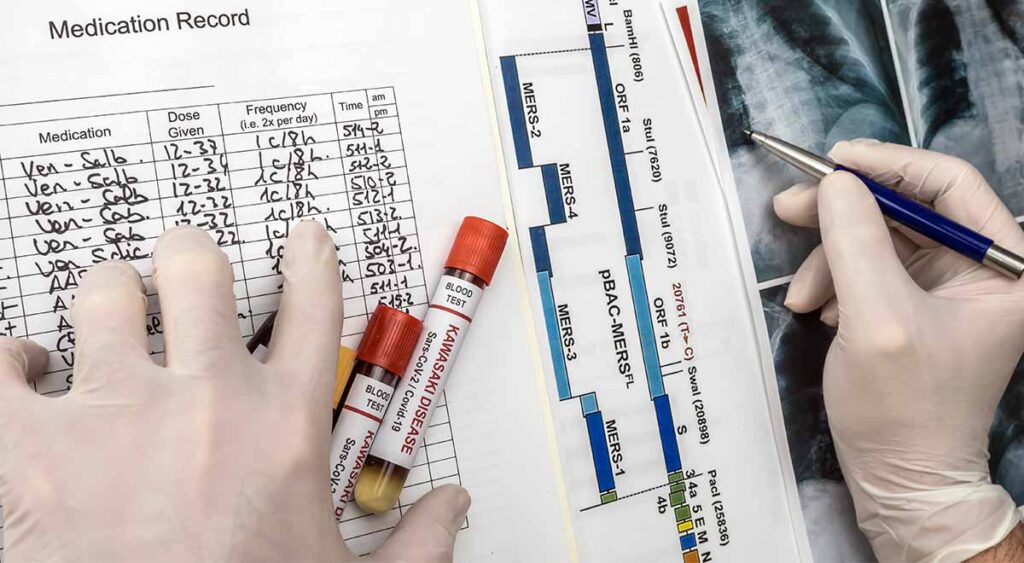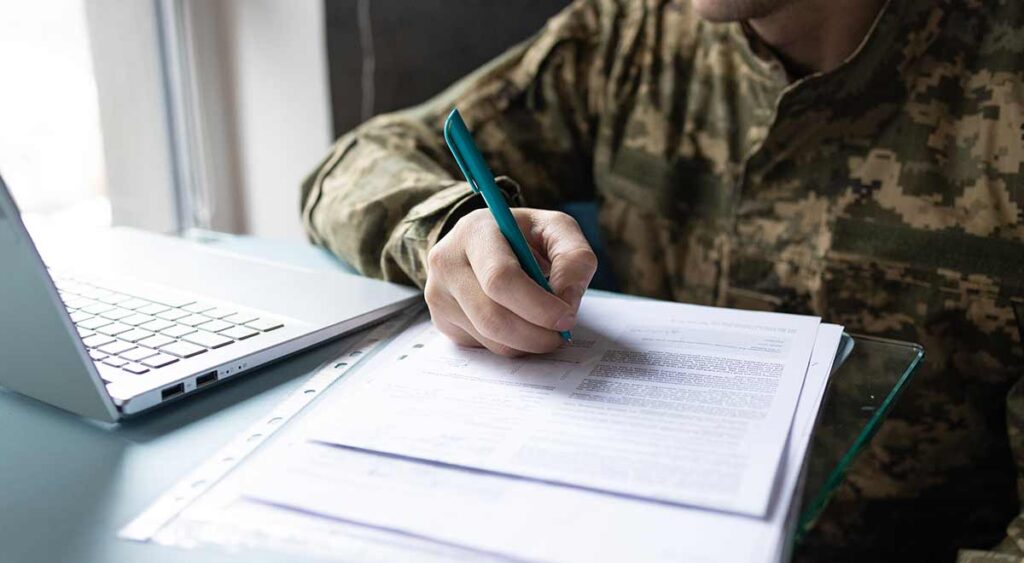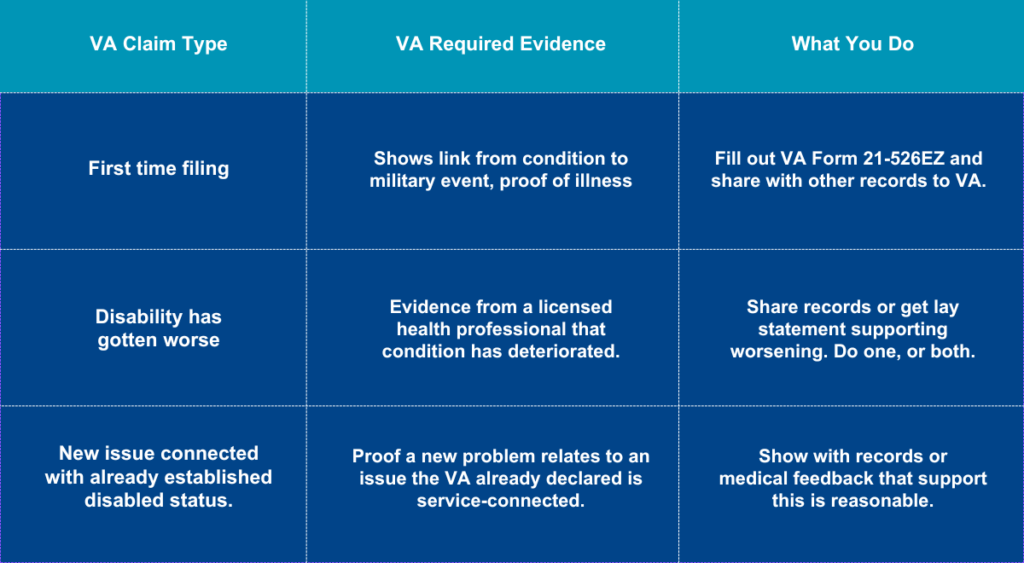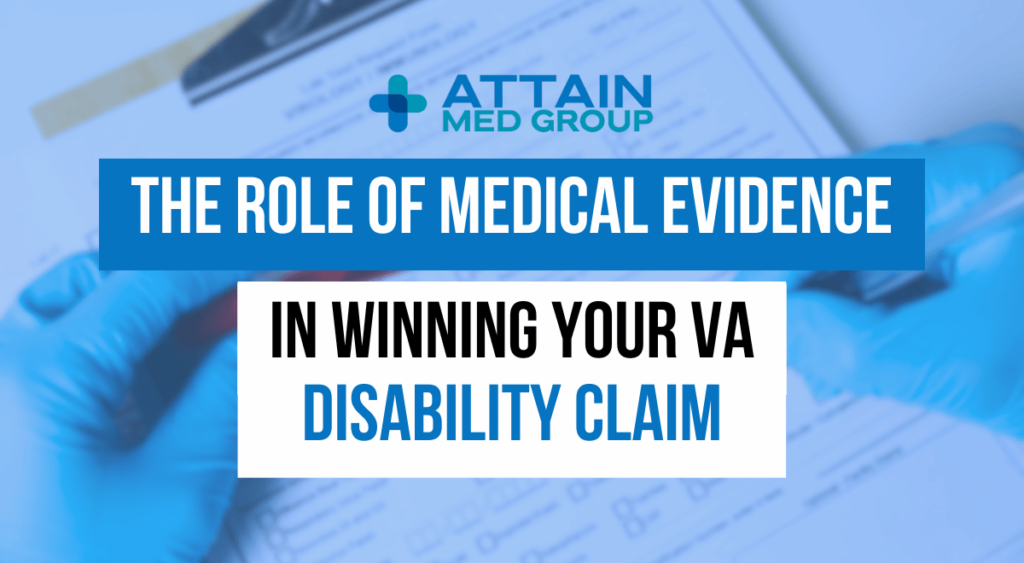Filing for VA disability benefits can feel overwhelming. Many veterans feel like the odds are stacked against them. You served your country, and now you’re facing a new battle: proving that your current health struggles connect back to your service. The role of medical evidence in winning your VA disability claim is critical, and probably your biggest challenge.
It’s tough when it feels like it’s you against the world, but having the right evidence provides undeniable support. Proper medical evidence demonstrates the severity of your condition to the VA. Understanding what evidence matters, and *how* to present it, can make all the difference.
The Foundation of Your VA Disability Claim: Medical Evidence
The VA needs a clear link between your time in service and your current health. Medical evidence is that bridge. It is not just about having a diagnosis, although that is crucial.
The VA also needs to understand your condition’s *impact* on your ability to work and live. This understanding helps them determine a fair disability rating. Think of medical evidence like a story.

What Medical Evidence Tells the VA
It’s a story told through doctor’s notes, test results, and expert opinions. The evidence must show a current, diagnosed condition and link it to an event, injury, or illness during active duty. Simply put, the stronger your story, the better your chances of securing the benefits you earned.
The VA gathers its own medical evidence, often through a C&P exam. A VA-approved doctor evaluates your condition and whether your symptoms match the diagnosis. This assessment indicates the impact on your daily life.
Key Types of Medical Evidence
Different medical records tell different parts of your story. The VA accepts a wide range of documents. You will want to focus your efforts, but gathering the right mix is vital.
Service Treatment Records (STRs)
These records are made during active duty. If you had an injury during training or experienced hearing loss from loud noises, it *should* be here. These records help the VA connect your medical issues to events or conditions during your service.
Sometimes, records are incomplete. Your DD214 or other separation documents are also important.
Private Medical Records: Adding Depth to Your Story
Your medical journey continues after service. Records from civilian doctors can show your condition’s progress, so private medical evidence is essential.
It originates from non-VA sources. Your physicians can provide detailed records if they have insight into your symptoms or have ordered crucial tests.
They show the ongoing impact on your life. Your family doctor treating chronic back pain for years, noting how it limits your ability to lift, stand, or sleep, significantly strengthens your claim. Private medical records are strong when your doctor knows your condition and history well.

VA Medical Records
If you’ve used VA healthcare, those records can provide the continued medical support needed. This evidence can be test results (like MRIs or X-rays), treatment records, or even patient files.
These complement existing records. While private medical records add context to your disability, they should supplement the VA medical records.
Nexus Letters: Making a Strong Connection
Sometimes, the link between service and your condition isn’t clear. A “Nexus Letter” is a statement from a medical professional that helps to show a connection between your condition and service.
This is crucial for complex medical cases. They need to show a clear, reasonable possibility based on professional findings. The letter should explain *why* they believe your condition is service-connected, referencing records and medical research. A nexus letter helps connect the dots in your service connected disability claim.
Independent Medical Examinations (IMEs)
Think of IMEs as “second opinions.” If the VA’s exam didn’t fully represent your situation, additional IMEs help. The professionals performing these exams must be third-party certified.
Beyond the Medical Records: Other Supportive Evidence
Medical records are the core, but other evidence also matters. Other supportive documentation can provide valuable “real-world” context that doctors’ notes alone may miss.
Documents provide “important evidence” and fill in the gaps. When things get unclear, supporting information can help in getting a rating increase or in supporting your VA claim for benefits.

Lay Statements/Buddy Statements
These statements come from those who know you well: spouse, friends, family, or fellow service members. They can describe how your condition affects daily life, helping paint a picture of your disabilities. It’s best to provide many details for lay or buddy statements.
They can discuss things a medical record won’t. Family, friends, or former service members can detail the daily struggle. Review VA Form 21-10210, also called the “buddy statement,” for a good example.
Specific Examples, Stronger Claims
Imagine your spouse writing about how you used to be an avid runner but now can barely walk due to knee pain. A former squadmate might describe how you were once sharp but now struggle with memory due to a Traumatic Brain Injury (TBI). The VA recognizes Lay Evidence; do not ignore its importance.
Specific Conditions: What to Emphasize
Certain conditions have challenges in proving service connection. More information is better in these cases. Knowing these issues beforehand puts you ahead.
Mental Health Conditions
These can be very tricky, including post-traumatic stress disorder (PTSD), depression, and anxiety. Conditions like PTSD need the “stressor” clarified—what ultimately caused the health issue.
Lay statements from those who knew you before and after service can show personality, behavior, or ability changes. When a physical injury isn’t clear, a chronic pain disability claim can be challenging.

Hearing Loss and Tinnitus
Many veterans have these issues, but proving a direct link can be tough, especially years later. Service records showing exposure to loud noise (like gunfire) are perfect. If those aren’t available, buddy statements about noise exposure and current hearing tests can support your VA disability claim.
Secondary Conditions
Sometimes, a service-connected disability leads to *another* problem. For example, a knee injury may cause back pain as you adjust your posture. You might need expert medical opinions to get an increase in your VA disability for secondary issues.
Presumptive Conditions
The VA knows certain conditions are more likely due to specific exposures during military service. Illnesses from hazardous materials are one example. These can be very important for illnesses appearing years after service. If you served in the current period or in certain locations, the VA might presume a connection. Military sexual trauma is also a consideration for some veterans and requires specific supporting documentation.
Organizing Your Medical Evidence: Tips and Best Practices
This process can be overwhelming. However taking your time now prevents unnecessary delays later.
- Make copies of everything, keeping originals safe.
- Use a binder or digital folder, grouping records by type or date.

Highlight Key Information
Don’t assume the VA reviewer will find everything. Highlight relevant information from friends, family, or co-workers and provide it yourself. There are statement forms, specifically VA Form 21-4138.
You want things clear if your disability claim is denied. The Benefits Delivery at Discharge (BDD) program allows service members to file for disability before separation, potentially speeding up the process. It is advantageous to submit a fully developed claim whenever possible. Additional evidence might be required depending on the condition. Examples include, reports related to military sexual trauma, or records from care providers outside the VA system.
The Role of Medical Evidence in Winning Your VA Disability Claim – Simplified
To simplify, here’s a table of what to submit.

Veterans may also seek assistance from a Veteran Service Officer (VSO) to help them gather evidence. For initial claims, providing comprehensive medical records can streamline the process. If applying for an increase, focus on the evidence showing the worsening of your condition. Those applying for Total Disability based on Individual Unemployability (TDIU) benefits should include evidence about their inability to work. Some might consider the veteran’s pension as another option.
What if my claim gets denied?
Don’t be discouraged immediately. Many valid claims are initially denied. To show favor, the VA needs evidence of a truthful claim.
Review the VA’s decision letter. They will state the reason for denial. This enables you to obtain further evidence. Some veterans may be eligible for assistance with DMV placards if their disability affects mobility.
You might file for Total Disability based on Individual Unemployability (TDIU) if issues worsen. You should review a VA disability benefits calculator if ever questioning the amount you are receiving.
You Have Options
Submit new evidence, request a Higher-Level Review, You may work with Vet Claim Solutions especially during filing a VA Claim
Veterans deserve support and can use every advantage. Veterans shouldn’t worry, but keep detailed records. Resources are available.
Conclusion
This can be stressful. The goal is securing deserved benefits for disabilities resulting from serving our nation. By collecting accurate, detailed, and organized information, you can win your claim with persistence. The role of medical evidence in winning your VA Disability Claim is a tough battle often requiring clarity for success. Help is available; you don’t have to go it alone. For any questions it is best to reach out for a free consultation so you understand your options.

